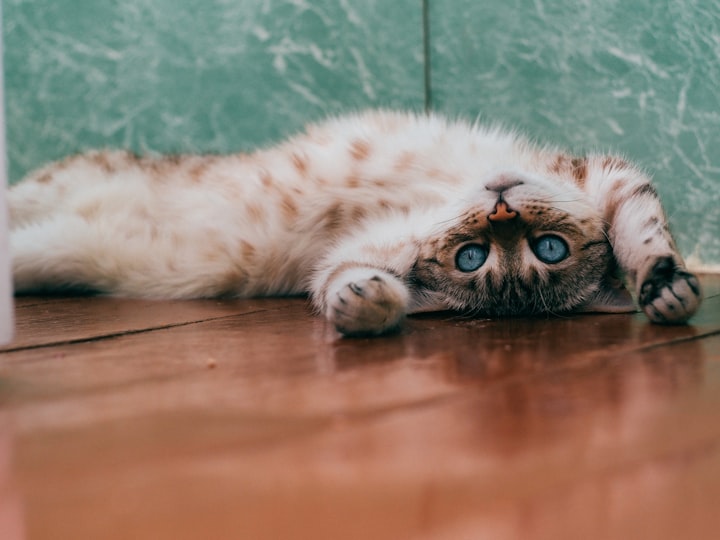Strange Behavior of Domestic Cats: What Does It Mean?
Cats Fact

Domestic cats have been human companions for thousands of years, yet they still manage to mystify and intrigue us with their peculiar behaviors. From the quirky and amusing to the downright baffling, cats seem to have an endless repertoire of strange habits. But what do these behaviors really mean? Here, we delve into some of the most common and puzzling behaviors exhibited by our feline friends.
1. Kneading
One of the most endearing and strange behaviors that cats exhibit is kneading, where they rhythmically push their paws into soft surfaces like blankets, pillows, or even their owners. This behavior is often accompanied by purring and seems to be a sign of contentment and relaxation.
What Does It Mean?
Kneading is a behavior that cats develop as kittens when nursing from their mothers. The rhythmic motion stimulates the flow of milk and provides comfort. As adults, cats may continue to knead when they are feeling relaxed, happy, or seeking comfort. It's a throwback to their kittenhood and is generally a sign of affection and contentment.
2. Chattering at Birds
Many cat owners have observed their feline friends making a strange chattering sound when they see birds through a window. This behavior often leaves owners puzzled and wondering what's going through their cat's mind.
What Does It Mean?
While there isn't a definitive answer, some experts believe that this behavior is a sign of frustration and excitement. Cats are natural hunters, and the sight of potential prey can trigger a reflexive vocalization. It's also possible that the chattering is a form of mimicry, imitating the sounds of birds to attract them closer. Whatever the reason, it's clear that our domestic cats still retain many of their wild instincts.
3. Bringing "Gifts"
One of the more unsettling behaviors that some cats exhibit is bringing "gifts" to their owners in the form of dead or half-dead prey, such as mice, birds, or insects. While this behavior is a testament to a cat's hunting prowess, it can be quite shocking for owners to wake up to a lifeless critter on their doorstep.
What Does It Mean?
Bringing gifts is a natural hunting behavior for cats. In the wild, mother cats teach their kittens to hunt by bringing them prey to practice on. When domestic cats bring their owners these "gifts," it's often seen as a sign of affection and a desire to share their hunting successes. While it may be unpleasant for humans, it's an instinctual and natural behavior for cats.
4. Sleeping in Strange Places
Cats are known for their love of sleeping, but they often choose the most peculiar and uncomfortable-looking spots to do so. Whether it's a cardboard box, a laundry basket, or the top of a bookshelf, cats seem to have an uncanny ability to find and sleep in the most unconventional places.
What Does It Mean?
Cats are crepuscular animals, meaning they are most active during the dawn and dusk hours. This behavior is a result of their natural instincts to find safe and hidden spots to rest during the day. In the wild, this would help protect them from predators. Additionally, cats are territorial creatures, and sleeping in high or enclosed spaces allows them to observe their surroundings and feel secure.
5. Purring When Stressed or In Pain
While purring is often associated with contentment and relaxation, some cats have been observed purring in situations where they are stressed, scared, or in pain. This can be confusing for owners, as purring is generally seen as a positive and comforting behavior.
What Does It Mean?
Purring is not always a sign of happiness in cats. Some studies suggest that cats may purr as a self-soothing mechanism in stressful situations. Additionally, the frequency of a cat's purr has been shown to have healing properties and can promote bone density and wound healing. So, while it may seem counterintuitive, a cat purring in a stressful situation could be trying to comfort itself and promote healing.
Conclusion
Domestic cats are fascinating creatures with a wide range of strange and puzzling behaviors. While some of these behaviors can be easily explained by their natural instincts and evolutionary history, others remain a mystery to even the most seasoned cat owners and experts. Understanding these behaviors can help us better care for and connect with our feline friends, enriching our lives and deepening our appreciation for the complex and enigmatic nature of cats.





Comments
There are no comments for this story
Be the first to respond and start the conversation.